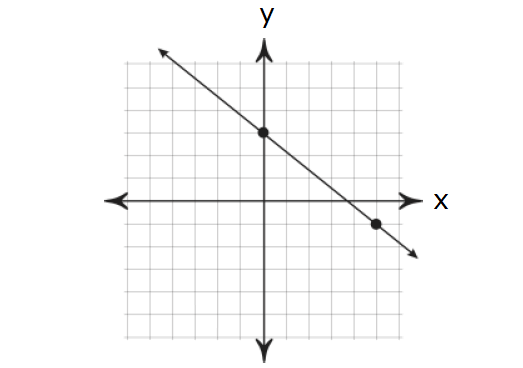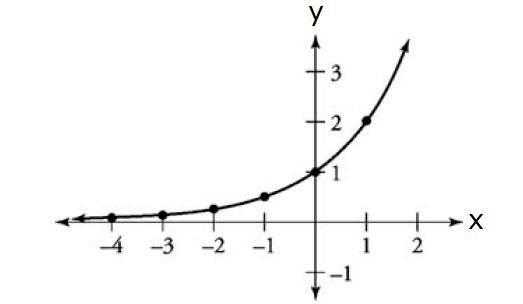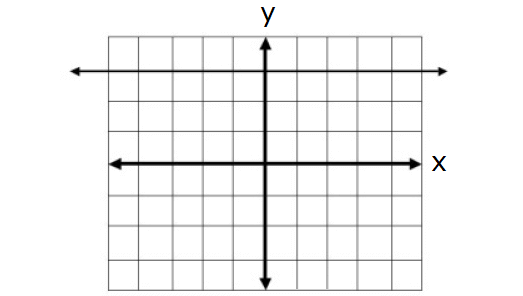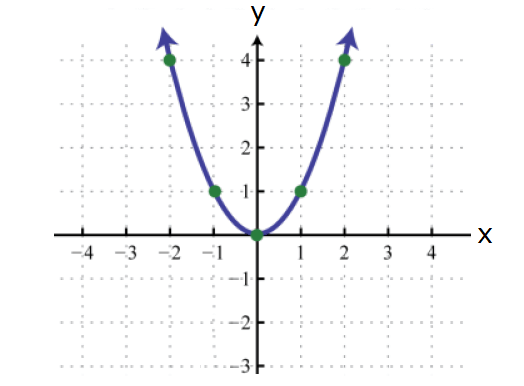IDENTIFY LINEAR AND NONLINEAR FUNCTIONS
Subscribe to our ▶️ YouTube channel 🔴 for the latest videos, updates, and tips.
Linear Function :
A linear function has graph that is a straight line. The rate of change between any two points is constant.
Nonlinear Function :
Nonlinear function is the function whose rate of change will not be constant. And also, its graph will not be a straight line.
We can determine if a function is linear or nonlinear by inspecting a table of values, a graph, and/or the equation.
Determine whether each table represents a linear or nonlinear function.
Example 1 :
|
x 1 3 5 7 |
y -2 1 4 7 |
Solution :
In the above table, as x increases by 2, y increases by 3. The rate of change is constant. So, the above table represents a linear function.
Example 2 :
|
x -1 1 3 5 |
y -2 6 22 46 |
Solution :
In the above table, as x increases by 2, y increases by a greater amount each time. The rate of change is NOT constant. So, the above table represents a nonlinear function.
Example 3 :
|
x 0 3 6 9 |
y 0 3 9 18 |
Solution :
In the above table, as x increases by 3, y increases by a greater amount each time. The rate of change is NOT constant. So, the above table represents a nonlinear function.
Example 4 :
|
x 0 4 8 12 |
y 4 2 0 -2 |
Solution :
In the above table, as x increases by 4, y decreases by 2 each time. The rate of change is constant. So, the above table represents a linear function.
Determine whether each graph represents a linear or nonlinear function.
Example 5 :

Solution :
The above graph is a straight line. So it represents a linear function.
Example 6 :

Solution :
The above graph is not a straight line. So it represents a nonlinear function.
Example 7 :

Solution :
The above graph is a straight line. So it represents a linear function.
Example 8 :

Solution :
The above graph is not a straight line. So it represents a nonlinear function.
Determine whether each equation represents a linear or nonlinear function. Remember that all linear functions can be written in the slope-intercept form, that is y = mx + b.
Example 8 :
y = 5x + 2
Solution :
The above function is in slope-intercept form.
So, it represents a linear function.
Example 9 :
y = 3(x - 4)
Solution :
The above function can be written in slope-intercept form.
y = 3(x - 4)
y = 3x - 12
So, it represents a linear function.
Example 10 :
y = x/2 + 5
Solution :
The above function can be written in slope-intercept form.
y = x/2 + 5
y = (1/2)x + 5
y = 0.5x + 5
So, it represents a linear function.
Example 11 :
y = 2/x - 3
Solution :
The above function cannot be written in slope-intercept form.
So, it represents a nonlinear function.
Example 12 :
y = -5x
Solution :
y = -5x
y = -5x + 0
The above function is in slope-intercept form.
So, it represents a linear function.
Example 13 :
Which equation represents a nonlinear function?
a) y = 4.7 b) y = 4 — x c) y = π x d) y = 4(x − 1)
Solution :
The equations y = 4.7, y = π x, and y = 4(x − 1) can be rewritten in slope-intercept form. So, they are linear functions. The equation y = 4 — x cannot be rewritten in slope-intercept form.
So, it is a nonlinear function. The correct answer is C
Example 14 :
Describe the difference between a linear function and a nonlinear function.
Solution :
The graph of a linear function shows a constant rate of change. A nonlinear function does not have a constant rate of change. So, its graph is not a line.
Example 15 :
Which one does not belong to Which equation does not belong with the other three? Explain your reasoning.
a) 5y = 2x b) y = (2/5) x c) 10y = 4x d) 5xy = 2
Solution :
a) 5y = 2x
Linear function in two variables x and y.
b) y = (2/5) x
Linear function in one variable.
c) 10y = 4x
Linear function in two variables x and y.
d) 5xy = 2
This is not a linear function. So, option d does not belong to the remaining.
Example 16 :
Does the equation represent a linear or nonlinear function? Explain.
a) 2x + 3y = 7
b) y + x = 4x + 5
c) y = 8/x2
Solution :
a) 2x + 3y = 7
Linear function in two variables.
b) y + x = 4x + 5
y + x - 4x - 5 = 0
y - 3x - 5 = 0
Linear function in two variables.
c) y = 8/x2
Since the variable is not at the numerator it is not a linear function. It is non linear function.
Subscribe to our ▶️ YouTube channel 🔴 for the latest videos, updates, and tips.
Kindly mail your feedback to v4formath@gmail.com
We always appreciate your feedback.
About Us | Contact Us | Privacy Policy
©All rights reserved. onlinemath4all.com

Recent Articles
-
US Common Core K-12 Curricum Algebra Solving Simple Equations
Jan 06, 26 04:54 AM
US Common Core K-12 Curricum Algebra Solving Simple Equations -
10 Hard SAT Math Questions (Part - 4)
Jan 05, 26 06:56 PM
10 Hard SAT Math Questions (Part - 4) -
10 Hard SAT Math Questions (Part - 3)
Jan 05, 26 06:34 PM
10 Hard SAT Math Questions (Part - 3)

